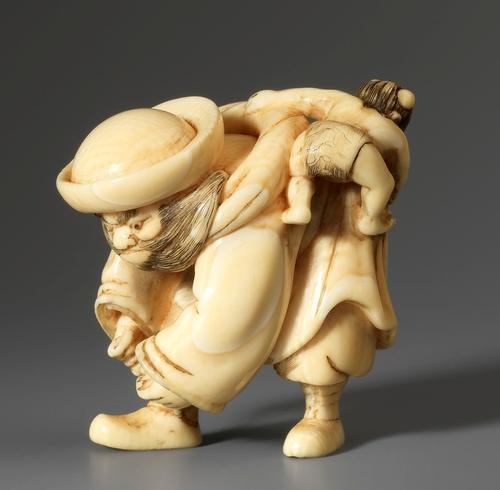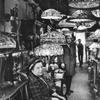AMERICANS ENTHUSIASTIC FOR JAPANESE ART SHOWN BY SYDNEY L. MOSS IN NEW YORK
- NEW YORK, New York
- /
- March 29, 2011

Sydney L. Moss Ltd welcomed many collectors, both established and new, to their New York exhibition of Japanese art at the Alexandre Gallery (Fuller Building) on view from 16 to 27 March 2011. Paul Moss reported a steady flow of visitors selling several pieces a day all to US museums and collectors, except for one which was acquired by a Chinese artist exhibiting nearby. By the close of the exhibition, 35 items had been sold, totalling over $¾ million. He was particularly impressed by the number of museum curators enquiring about the works on offer, and is optimistic that these institutions will acquire some of the items in due course.
One of the most important pieces to be sold was a lacquered box, decorated with sagemono ensembles, by Ogawa Haritsu known as Ritsuō (1663-1747), the great Japanese master of the applied arts. An American collector paid in the region of $200,000 for this splendid example and also bought a Hanzan pottery censer for around $24,000 and a Hanzan inlaid 5-petal-form wood box with windblown theatre curtain design for $48,000, as well as two netsuke.
The exhibition included many exquisite works, particularly in lacquer, from the collection of Elly Nordskog, and a four-case inrō signed by Shibata Zeshin (1807-1891) was among the first works to sell, at $80,000. This outstanding piece, dating from c.1870, is decorated with a maple leaf and five red-brown ants, the reverse with a maple seedling and three further ants, together with an old amber globular ojime with fossilised ant inclusions. Another piece from the Norskog collection, a charming ivory carving just 4.2 cm high of a gruff-looking Shōki bending to tie his shoe while an oni runs over his hip, was sold for $17,500. This Shōki and oni is a delightful variant upon the relatively rare Dutchman bending to tie or to remove a stone from his shoe, and probably comes from a late 18th century Kyoto workshop or carver.




10270x400_c.jpg)










100x100_c.jpg)





![Peter Paul Rubens (Flemish, 1577–1640), After Titian (Tiziano Vecelli) (Italian [Venetian], c. 1488–1576), Rape of Europa, 1628–29. Oil on canvas, 71 7/8 x 79 3/8 in. Peter Paul Rubens (Flemish, 1577–1640), After Titian (Tiziano Vecelli) (Italian [Venetian], c. 1488–1576), Rape of Europa, 1628–29. Oil on canvas, 71 7/8 x 79 3/8 in.](/images/c/e2/2e/Jan20_Rape_of_Europa100x100_c.jpg)